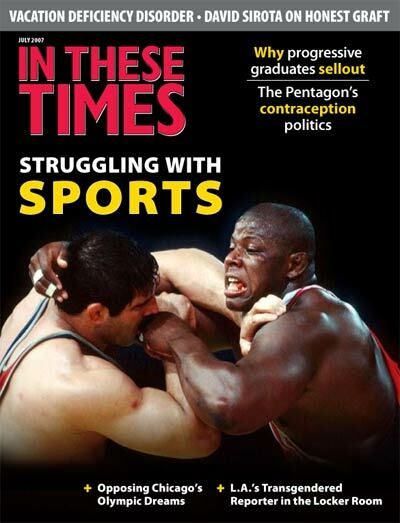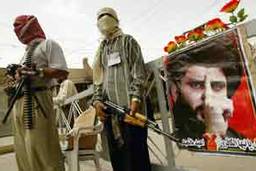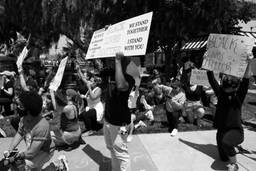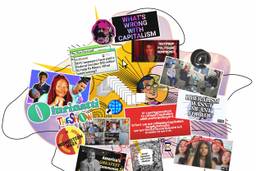Iran and America’s Tug of War
Iran’s real threat to the United States has less to do with nuclear ambitions and more to do with an explosive tension between politics and resources
Robert S. Eshelman
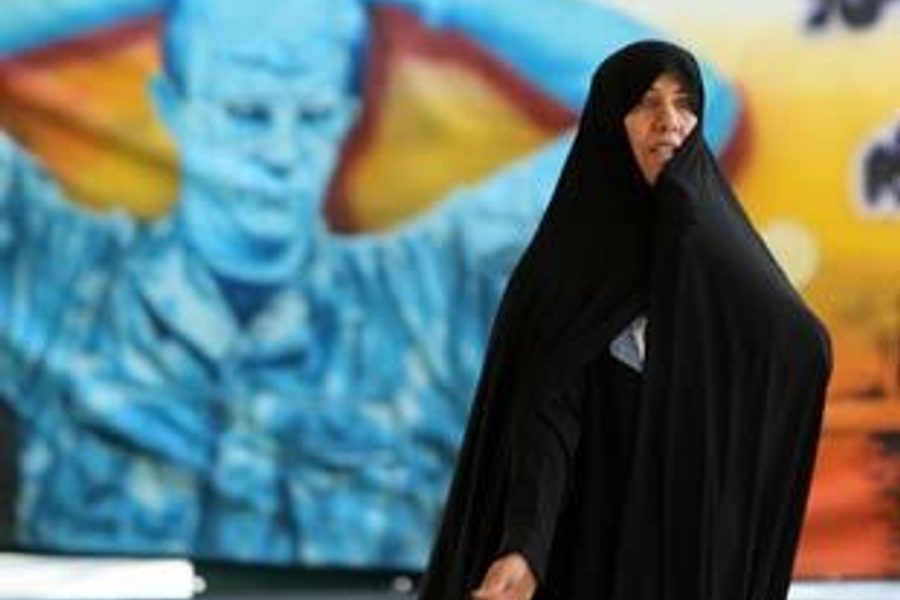
As the Bush administration boosts its military presence in the Middle East and issues frequent, pointed barbs at Tehran, which in turn quickens the pace of its nuclear enrichment program, two new books examine the object of the administration’s hostility.
In Iran Oil: The New Middle East Challenge to America (IB Taurus, 2006), British journalist Roger Howard offers a sober analysis of Iran’s threat to American power, albeit one that has nothing to do with its nuclear ambitions. “Iran’s contemporary challenge to the United States,” he writes, “represents an explosive tension between politics and resources.” Howard argues that by seeking to isolate Iran through U.S. and U.N.-backed sanctions, the United States forces nations to choose between backing its fight against Iran and future access to the Islamic Republic’s flush reserves of oil and natural gas. As global demand for hydrocarbons increases, he predicts energy-hungry nations will choose the latter.
Only Saudi Arabia, Canada and, perhaps, Iraq have greater oil reserves, and only Russia has more plentiful supplies of natural gas. Additionally, Iran’s energy sector offers lucrative investment opportunities to foreign companies that can lend a hand in repairing its aging production facilities, in tapping new fields, and delivering oil and gas to the world market.
The future energy needs and investment opportunities of U.S. political allies – particularly Britain, France, Germany, Japan and Pakistan – are linked, to varying degrees, to Iran. Japan, for example, possesses few energy resources and imports much of its oil from Iran. Recently, it secured a stake in Iran’s enormous Azadegan oil field. Despite some domestic oil production, Pakistan imports more than 80 percent of its energy supply and, since the ’90s, has pursued a massive pipeline project that would deliver natural gas from Iran and, potentially, into India as well. European-based companies are also linked to Iran’s energy sector.
Policy differences at the United Nations between the United States and its allies bear out Iran’s particular challenge to American power. While Washington has taken a tough stance vis-à-vis Iran, its allies, particularly in Europe, have taken a markedly less aggressive position. Howard dismisses the view that these differences represent a good-cop, bad-cop strategy. Such a characterization, he says, “disguises not just its accidental quality but, more specifically, also the strength of the political disagreements between the different capitals.”
By seeking to isolate Iran, Howard argues, the United States drives a wedge between itself and its allies, while at the same time U.S. adversaries forge strong economic ties to Iran. China’s leading source of oil is Iran, and Russia has secured contracts to improve Iran’s energy infrastructure and to assist in the development of its nuclear enrichment program.
According to Howard, if the United States continues its strident reproach of Iran, it will be “writing several paragraphs of its own obituary.”
While Howard’s analysis of U.S. foreign policy portends its demise, Hamid Dabashi, the Hagop Kevorkian Professor of Iranian Studies and Comparative Literature at Columbia University, surveys 200 years of Iranian political history and culture, and offers a frequently punchy attack on contemporary American politics.
In Iran: A People Interrupted (The New Press, 2007), Dabashi turns rigid binaries such as “East and West” and “modernity and tradition” on their heads. He puts it this way: “I [wrote] this book to persuade people to discard the clichéd categorization of Iran as a country caught between a belligerent tradition and an alien modernity, and to adopt a more historically nuanced, culturally multifaceted, and materially grounded reading of Iran.”
As a point of departure, Dabashi rails against boosters of United States power such as Samuel Huntington, author of The Clash of Civilizations, and Francis Fukuyama, who famously declared the end of history. “While Fukuyama seeks to strike out all alternative historical narratives, for they give nations narrations with which to puncture the inflated hubris of empires,” Dabashi says, “Huntington reduces the very same nations and their unpredictable revolts and resistances to a handful of fabricated civilizational categories in order better to manage their rebellions against globalized tyranny.” Dabashi rebuts Fukuyama’s hubris and Huntington’s fabrications by way of Iran’s past and the particular struggles of its peoples today.
Dabashi’s historiography begins in the early-19th century, when Britain and Russia secured military footholds and lucrative oil concessions from Qajar kings. In response, a shaky coalition of clerics, merchants and peasants launched the Constitutional Revolt of 1906 – 1911, demanding greater political accountability and an end to foreign plunder. Dabashi argues that Iran’s literary and intellectual figures of that period created a “literary imagination” and a “critical consciousness” that gave shape to these efforts.
He then examines the oscillations of the 20th century Pahlavi Dynasty; the rise of secular leftist movements connected to international struggles; America’s 1953 overthrow of Prime Minister Mohammed Mosaddeq; and the wave of terror unleashed by Muhammad Reza Shah’s brutal domestic security force, beginning in the late ’50s. Dabashi describes these years as a period of “fear of the tyranny that ruled a people with systemic mendacity, and the ecstasy of dreaming what was possible beyond it.” And, as with his examination of the Constitutional Revolt, he describes a flourishing of creative expression that was both informed by these events and gave a voice to Iranian social movements.
In discussing the 1979 Iranian Revolution, Dabashi describes the stark social and class divisions between rural and urban populations, as well as those that separated merchants and the poor from elites and an emerging middle class. Importantly, he describes how the Shia religious establishment overtook leftist and nationalist movements in articulating opposition to the Shah and foreign meddling in Iran, thus setting the stage for the ouster of the Shah and the ascension of the Ayatollah to power.
Turning to President Mahmoud Ahmadinejad’s election, Dabashi highlights class dynamics. “The two candidates who received the most votes … stood for the most basic and crudest cases of class division,” he says. “[T]he middle-class, upwardly mobile, Yuppie International, and the Eurocentric voters opted for Ali Akbar Hashemi Rafsanjani, while the poor, the disenfranchised, those heavily dependent on state social subsidies, and the religiously more pious voted for Mahmoud Ahmadinejad.” Those that voted for Ahmadinejad, Dabashi points out, were in large part the same Iranians that Rafsanjani and his successor Mohammad Khatami overlooked in their economic and social reforms in the ’90s.
Ahmadinejad’s election represents the resurgence of the hard-lined clerical class, but their power is buoyed by the fears in Iran that Tehran may be the next American military target. One gives rise to and strengthens the other. “There is a belligerent tribalism,” he says, “linking the most recalcitrant clerics in Iran to the most obstinate neocons in Washington, D.C.” This may best be described as a downward spiral, rather than merely a vicious circle.
Howard depicts the bankruptcy of the Bush administration’s Iran policy, which is, in part, based on the notions that Dabashi opposes. The ideological binaries promoted by the likes of Huntington and Fukuyama continue to inform many American policy makers, despite their abject failure in Iraq and the never-ending war on terror. For Howard, this mindset is the primary obstacle to American rapprochement with Iran. Worse, as Dabashi points out, it forecloses the histories and agencies of peoples the world over and escalates the possibility of unthinkable peril.
